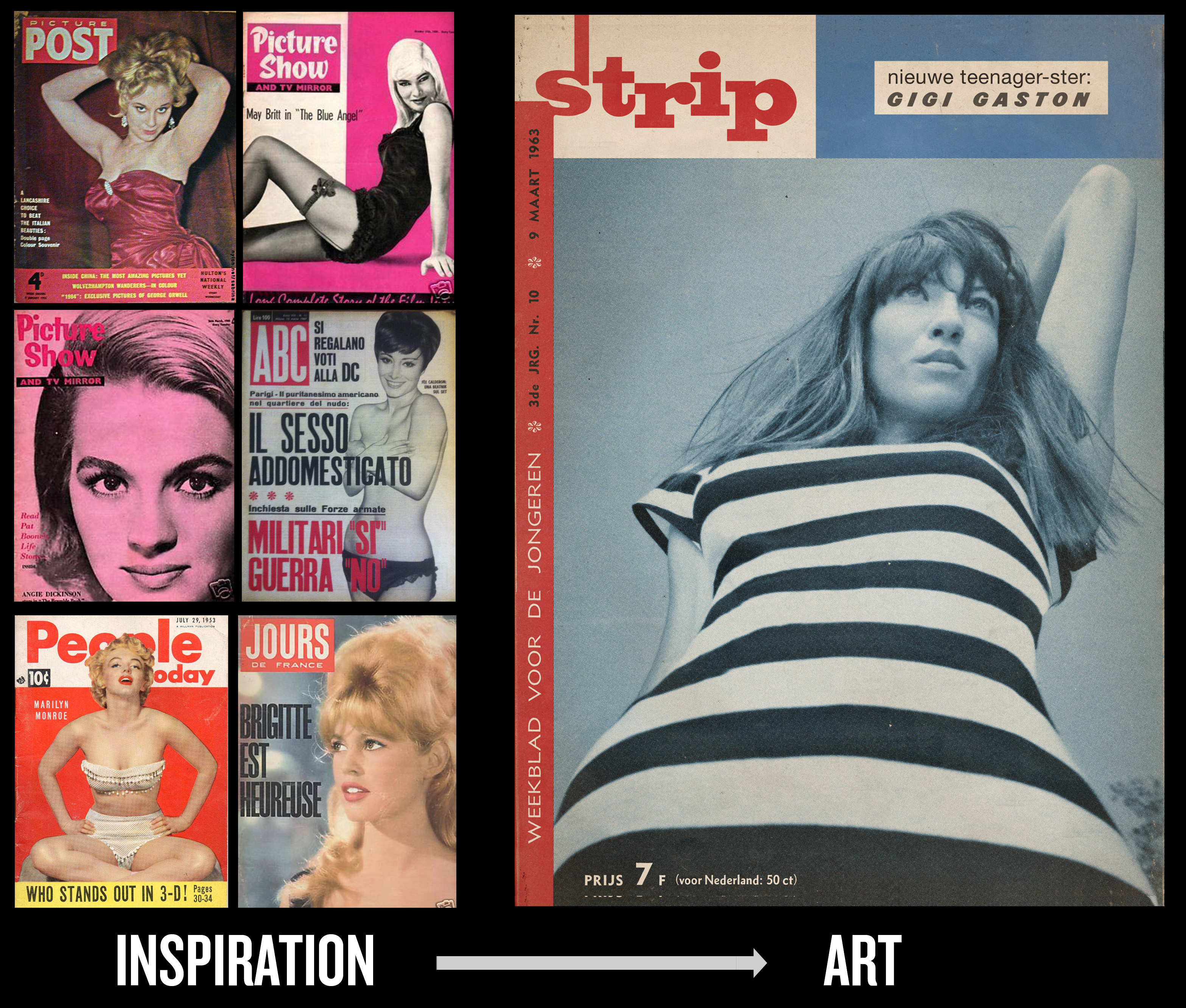
Josh (co-author of “The Art of Doing”) never would have been able to create his fine art project of a fictional celebrity, Gigi Gaston, The Black Flower, had he not stolen from the history of graphic design. He studied—then methodically recreated—the design styles and photographic trends of fanzines, 45 and LP covers, American and European scandal and celebrity magazines from the 60’s and 70’s, to create a fictional but ultimately believable, archive of his star.
Pablo Picasso was a genius at being a thief. “Good artists copy, great artists steal,” he allegedly said.

When Picasso first saw African artifacts, he was inspired to “steal” the style, features and motifs, and commit the revolutionary act of inventing cubism. And of course he wasn’t the only one. Instead of merely copying from Masters who came before them, other groundbreaking artists stole from styles outside the realm of what was considered acceptable fine art—Andy Warhol stole from commercial art, Cindy Sherman from film stills, Jean-Michel Basquiat from folk art, Damien Hirst from utilitarian museum displays.




Because these artists had the audacity to steal from outside the boundaries of their worlds and create styles that had never been seen in galleries or museums, their work had shock value—gold in art world currency. The new imagery had the power to make viewers not only re-examine but often rethink their original perception of the source material. After Warhol, can anyone look at a Campbell’s soup can as just a can of soup?
Cross-disciplinary thieving doesn’t (and shouldn’t!) apply just to artists. If you’re going to write a romance novel, why not steal from pornography and end up with a “50 Shades of Grey”? If you’re going to start a cable channel, why not steal from the Hollywood feature film aesthetic and end up with an HBO? If you’re going to launch a social media platform, why not steal from mobile text messaging and end up with a Twitter? And by being the first, you become the standard by which all followers will be judged.
So whatever it is you do, whether you’re an artist, a startup entrepreneur or a magazine editor, look to influences outside your chosen field to find inspiration and the shock of the new.








